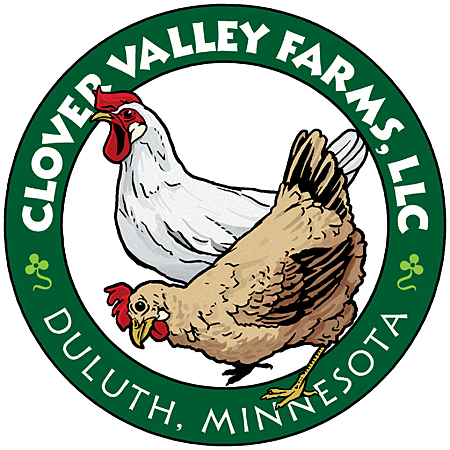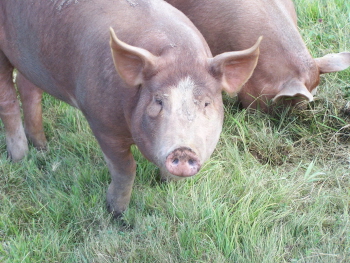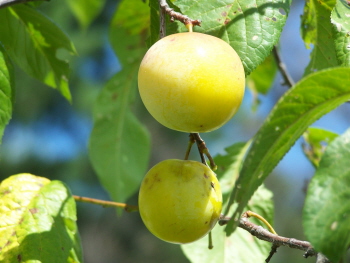Hogs
Jeff and Cindy raised three hogs in 2009 and five in 2010, though two of those were lost to vandalism in August. In 2010, they purchased the five hogs (crosses between two heritage breeds, Tamworth and Hereford) as 40-lb “feeders” in late April. They were interested in the Tamworth breed because it is known for being a better grazer and doing less rooting than other breeds. They accepted a Tamworth-Hereford cross because of the breeder they were working with; they also understood that Hereford crosses have slightly better growth rates than pure Tamworths. The hogs did well in 2009 and 2010, but in 2011 there was more Hereford in the cross than before, and the hogs rooted much more than Jeff and Cindy would’ve liked. They decided to start investigating other sources of feeder pigs and other breeds, such as Red Wattle or Large Black, known for doing more grazing and less rooting.
Cindy and Jeff use an organic swine starter ration containing 16% protein until the hogs reach about 100 lbs, then use an organic swine finish ration containing 14% protein (see Production > Yields & Profitability > Hogs for amounts of feed).
Hog diets are supplemented with apple pulp from Jeff and Cindy’s cider press, buckets of apples during tree thinning, and other intermittent fruit and vegetable scraps and garden weeds.
|
Hogs are kept in a 165’-perimeter, portable paddock with electric fencing. As of 2010, the paddock contained a two-hopper, 300-lb capacity feeder (but see Lessons Learned box [“Eating Like A Pig”] under Production > Yields & Profitability > Hogs), an 80-gallon water tank with 2 founts, and a 6’ x 14’ Port-a-Hut shelter. See Educator Tip box "Livestock Water Requirements" for information about water needs of hogs. The paddock is moved every 1-2 weeks across pasture (see On-Farm Research). Jeff and Cindy anticipate keeping a maximum of eight hogs in this size of enclosure. |
Farmer’s Perspective: On The Bookshelf Dirt Hog: A Hands-on Guide to Raising Pigs Outdoors ... Naturally By Kelly Klober This book, published by Acres USA, addresses raising hogs on pasture with sections including housing, fencing, breeding, herd maintenance, feed, and marketing. by Philip Hasheider This book, published by Voyageur Press, covers housing, feeding, and other aspects of care, plus breeding, showing, and marketing. It also includes a glossary, resources, and information about pork organizations, regulations, and ordinances. |

Educator’s Perspective: Resource Tip To learn more about the pros and cons of different heritage breeds, visit the American Livestock Breeds Conservancy, whose mission is to ensure the future of agriculture through genetic conservation and the promotion of endangered breeds of livestock and poultry. Over 180 breeds of livestock and poultry are addressed, including asses, cattle, goats, horses, sheep, pigs, rabbits, chickens, ducks, geese, and turkeys. |
 |
 |


